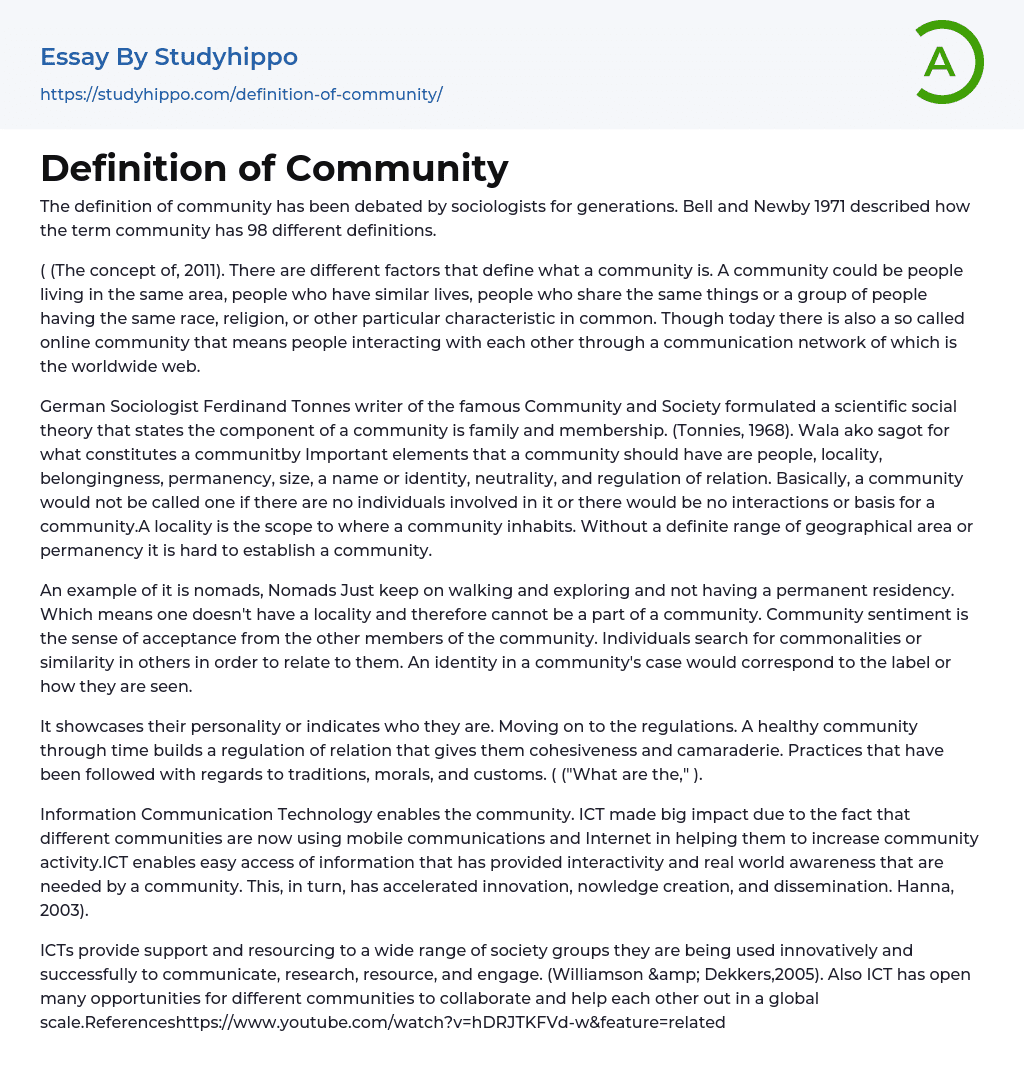There has been much discussion among sociologists regarding the definition of "community," resulting in Bell and Newby's (1971) identification of 98 unique interpretations.
The definition of a community, as of 2011, encompasses various aspects. These may involve people residing within the same geographical location, individuals having comparable lifestyles or preferences, or those with shared characteristics like ethnicity or faith. Furthermore, contemporary interpretations also incorporate virtual communities formed through online platforms that enable people to communicate and engage globally.
According to German Sociologist Ferdinand Tonnes, the essential components of a community are family and membership, as detailed in his famous work Community and Society (Tonnies, 1968). Key elements that define a community include the presence of individuals, a specific locality, a sense of belonging, permanency, a certain size, a name or identity, neutrality, and regulation of re
...lationships. Essentially, without people and meaningful interactions, a group cannot be considered a true community. The designated locality is also crucial to defining the boundaries of a community, and without a sense of permanency within those boundaries, it becomes difficult to establish such a group.
Nomads exemplify the absence of a fixed home and constant exploration, leading to a lack of locality and exclusion from community. Community sentiment entails seeking common ground and approval from fellow members. In this sense, identity pertains to how one is perceived or categorized within the community.
People display their unique personality and identity through their displays, while rules serve the purpose of fostering a cohesive and thriving society. Over time, customs, traditions, and morals have been instituted to uphold these practices.
According to Hanna (2003), the use of mobile communication and the Internet has made information more accessible through
Information Communication Technology, leading to greater engagement in communities. As a result, various communities have experienced increased innovation, knowledge generation, and dissemination.
Williamson ;amp; Dekkers (2005) state that ICTs can be a valuable tool for supporting and providing resources to various societal groups. This can be achieved through innovative communication, research, resourcing, and engagement methods. Furthermore, ICTs offer opportunities for diverse communities to collaborate globally and provide mutual aid. For more information see: https://www.youtube.com/watch?v=hDRJTKFVd-w;feature=related, http://www.preservearticles.com/201104306139/what-are-the-essential-elements-of-community.html
- Caste System essays
- Citizenship essays
- Civil Society essays
- Community essays
- Culture essays
- Deviance essays
- Discourse Community essays
- Female essays
- Filipino People essays
- Igbo People essays
- Indigenous Australians essays
- Indigenous Peoples essays
- Men essays
- Middle Class essays
- Minority Group essays
- Modern Society essays
- Popularity essays
- Social Control essays
- Social Institution essays
- Social Justice essays
- Social Norms essays
- Social Responsibility essays
- Socialization essays
- The nation essays




